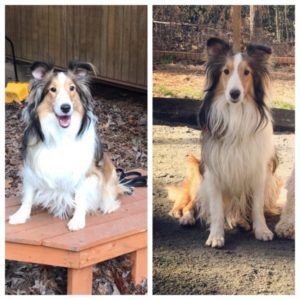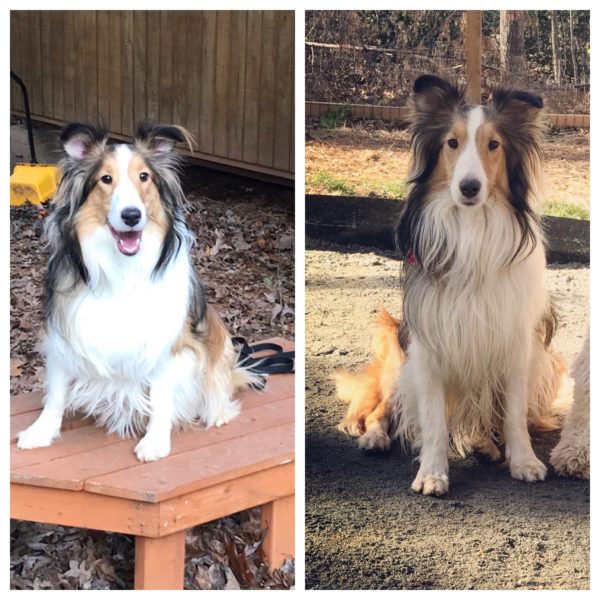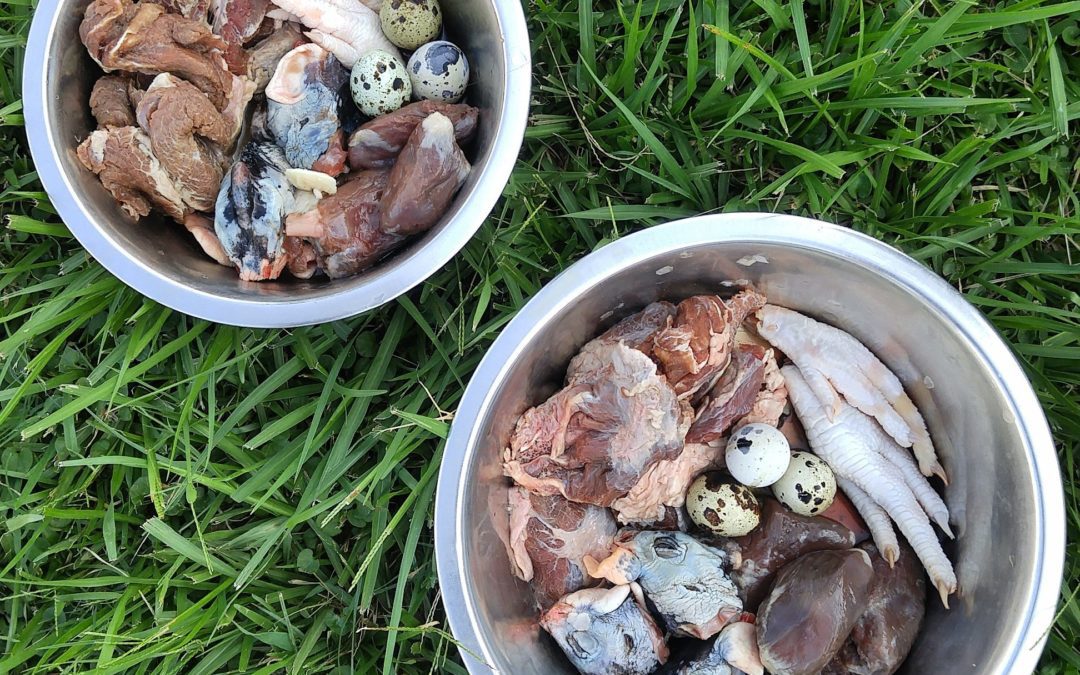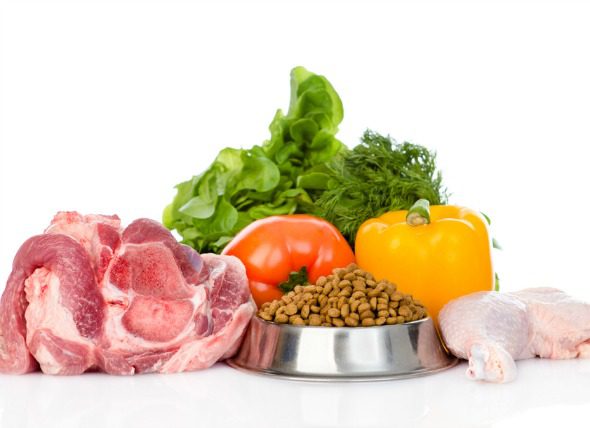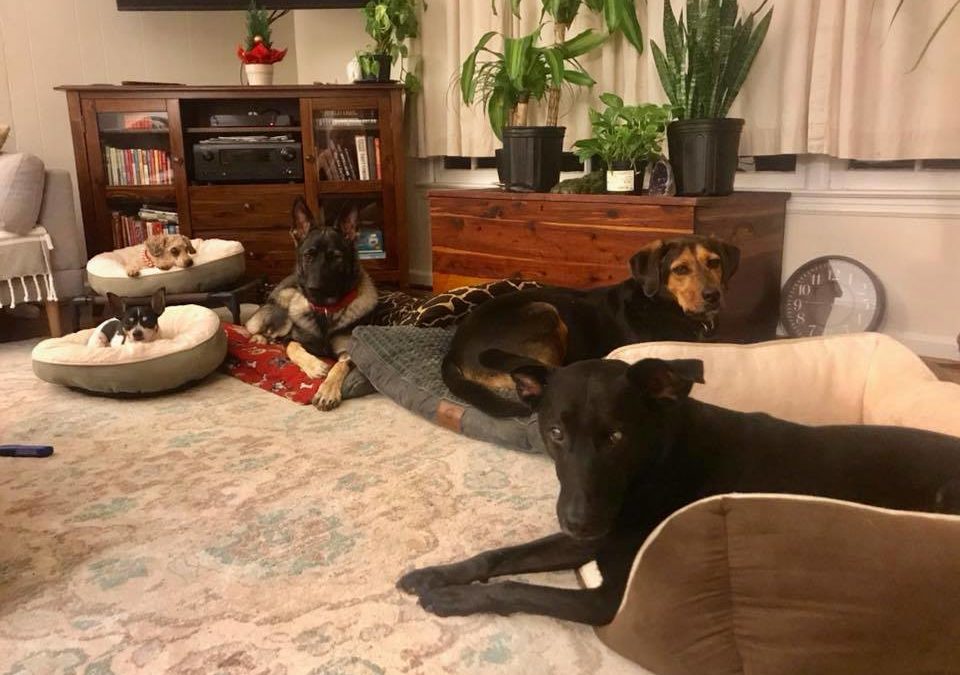Guest Authored by Emily Shirey
There’s an epidemic in dogs across the world that many people are unaware of. It’s happening everywhere, even in our own neighborhoods. People are unknowingly killing their dogs with kindness. By causing our canine companions to be overweight, we are putting them at risk for a massive amount of health risks and we are shortening their lifespan. According to a 2016 study, over 53% of dogs are overweight or obese in the United States and that can shorten their life up to 16%. (Ref: https://petobesityprevention.org/2016/)
What does a healthy weight look like?
A large part of the problem with obesity in pets is that we have become blind to what a healthy weight looks like. When you see that 50% of dogs are overweight, it becomes “the norm.” So what does a healthy weight look like?
You can observe a few key areas of your dog to address weight, the two most notable being the tuck (the abdomen) and the hips viewed from the top. From the side, your dog should have a visible “tuck” from behind his ribs to his hind legs. If this area is flat from his ribs to his hind legs, your dog is overweight. When viewed from the top, your dog should have a nice hourglass figure. Once the waist starts to disappear, the dog is overweight. It’s also good to check the ribs. Can the ribs be easily (meaning as you gently run your hand over the dog) felt? As soon as you have to press at all to feel ribs, the dog is overweight.
Just like with humans, there are a few different categories of body condition. A human can be at an ideal weight by eating a small amount, even if they don’t exercise at all. But that is a totally different body type from a human that is at an ideal weight because they eat healthily and exercise. This is the difference between “pet weight” (a good weight, but not in shape) and “fit/conditioned” (lean and strong). Fit/conditioned pets may appear to be underweight because their ribs are more visible, but the difference is their muscle tone. A dog that is too thin will have muscle wastage, a dog that is fit/conditioned will have muscle mass.
The risks of being overweight.
Many of the same risks that are associated with human obesity are the same with dogs. We regularly hear about the dangers of being overweight from our doctors, on the news, on the Internet, in magazines, and in books. Yet, it is not often a topic for dog owners. It’s important to understand the expansiveness of the risks associated with being overweight:
- Increased risk of cancer
- Damage to joints, bones, and ligaments (arthritis, hip dysplasia, ACL/CCL tears)
- Heart disease/increased blood pressure
- Diabetes
- Hypothyroidism
- Kidney Disease
- Decreased immune function
- Hair and skin problems
- Difficulty breathing
- Decreased stamina
- Decreased liver function
- Heat intolerance
- Digestive disorders
- Increased anesthetic risk
- Reproductive problems
- Decreased quality and length of life
Overweight dogs are suffering. Even though it often comes from a place of good intentions, it’s not cute and it’s not synonymous with love.
Dogs can’t choose to suffer or not.
Whether or not you want to eat healthy and exercise is a choice you get to make, knowing the consequences either way. It is not a choice that our dogs get to make. They eat what we feed them and their exercise is dependent on what we do with them. They don’t understand the correlation between their food and the joint pain they are experiencing or the difficulty they have breathing. They have no idea that being overweight is shortening their life. So it is our responsibility, as dog owners, to take the best possible care of our pets. We can be the ones that influence their health and happiness, the way they experience life, and the quality of it. As much as we love our pets, who would want anything but the best quality of life for them?
Feed Good Foods
Abs are made in the kitchen, right? All good health starts with the fuel you feed your body with. As mentioned in the first post in this series: What Should I Feed My Dog? Best Dry Dog Food, many dog foods are packed with carbs (sugars). Those carbs directly relate to weight gain and the issues listed above. We’ve all heard that sugar feeds cancer, so think about what those sugar-filled foods are doing to your dog.
Feed the best food you can afford and don’t settle. Don’t bank on what your friend/neighbor/coworker/vet tells you is the “best” food; do your research and decide for yourself. Just like with human diets, feeding fresh, whole foods that are species-appropriate is what dogs are designed to eat and what is the most natural for them. If you want to learn more about a Raw Diet see our blog: Should I Switch To Raw? By switching from a poor quality diet to a high-quality diet (fed appropriately, not overfed), you can help your pet drop weight with great success!
But, he’s always hungry!
There are many reasons why so many pets are overweight, but it boils down to too many calories and not enough exercise. If your pet is constantly begging for food, that does not mean he needs to eat! Dogs can survive as scavengers, which means they would eat whatever they could find to stay alive. As companions, their next meal is guaranteed, but they don’t understand that. Just because he begs does not mean he needs to eat. Practice a little impulse control yourself and know that you are doing the best for him by not offering any scraps or additional food if he still seems hungry.
If you would like to add healthy foods to your pet’s kibble, such as leafy greens, that’s fantastic! But keep it to a minimum, as in less than 10% of his whole diet. Avoid vegetables that are filled with starches (sugar), such as sweet potatoes. Here (https://therawfeedingcommunity.com/2017/02/12/simple-ways-to-improve-your-dogs-kibble/) are some simple ways to improve your dog’s kibble diet.
I recognize that my dog is overweight, now what?
Recognizing the problem is the start of being on track to weight loss! Just like we hear for humans, the key to weight loss in pets is diet and exercise. I can’t stress a quality diet enough. Healthy, quality ingredients and portion control is key. If you’re feeding kibble, feed the amount on the bag based on the dog’s IDEAL weight. If your pup is 80 lbs. but should be 60 lbs., feed using the directions for a 60 lb. dog. This is so important! Keep treats to a minimum, or use your dog’s regular portion of kibble as a treat! If you’re feeding raw, you feed 2% of your dog’s ideal weight.
If your dog is obese, please consult with your veterinarian before starting any exercise, as it may be harmful to their joints. If your dog is just overweight, plenty of long walks will help you change that! Don’t worry about speed; simply walking can do the trick! Walking distances (work up to it if your pup has been sedentary) and up and down hills are a great form of exercise. Running, swimming, and other activities such as agility, tracking, hunting, pulling, and so on are additional ways to get your pup moving. Join local clubs or find walking friends that will encourage you to stay active! It will be great for your health, too!
Consistency is key here. You can’t expect weight loss results if you only work out once a week and the same goes for your dog. He should have some sort of physical (and metal!) exercise every single day! Fenced-in backyards are fantastic, but they are not exercising. If you have trouble walking your dog, reach out to us about training! Nothing is more frustrating than having a difficult dog to walk, which doesn’t provide much motivation to keep him active. Nothing is more enjoyable than walking a nicely heeling dog; that could be game-changing for keeping him active!

Kibble fed, 30 minutes of walking per day
61 lbs., overweight
When I switched Pinky to raw food in October, I knew she was overweight from so much crate rest after surgery in the summer. I had no idea that she was ~10 lbs. overweight! That’s 20% of her body! That’s like a 200 lb. person needing to lose 40 lbs.! It can be hard to visualize how overweight your dog is, but know that every little bit counts due to its small size.
Pinky, adult Pitbull (February 2018)
Raw fed, 30-60 minutes of walking per day
52 lbs., Ideal Weight
Fit/Conditioned
Fit, Ideal Weight
After being surrendered to an animal shelter, it was clear Annie’s previous owners had over-fed her to the point of obesity. Thankfully, she was rescued from the shelter and went from 42lbs to 29lbs in just 5 months with appropriate diet and exercise!
Summary
The best way you can express your love to your pet is by ensuring they live a long, happy, healthy life. Obesity severely impacts a dog’s quality of life and there are plenty of ways to show your love other than overfeeding. Dogs love to explore, play and go for walks, which is the perfect way to spend quality time together doing something your pup loves at the same time you are keeping your dog healthy. If you struggle with your pet’s weight or enjoying outdoor activities together, get help!

